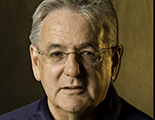
Joe C’ de Baca
Las Vegas, N.M. — New Mexico Highlands University GEAR UP Program Director Joe C’ de Baca retired Nov. 30 after 21 years of distinguished service to the university.
“Joe’s contributions to the university, our students, and area middle and high school students have been remarkable,” said Highlands University President Jim Fries. “All of us wish him and his wife Mabel well as the both retire from the university.”
During his tenure with Highlands, C’ de Baca was instrumental in garnering more than $22 million in grant funding for Highlands University initiatives.
“Joe has been very successful in writing strong grant proposals, providing a really meaningful income stream to the university and its academic programs,” said Linda LaGrange, associate vice president for academic affairs. “His perseverance is incredible and he never gives up on a grant.”
Mary Shaw, a long-time biology professor at Highlands and Biology and Chemistry Department chair, said she admires C’ de Baca’s extraordinary dedication to Northeastern New Mexico students and their education.
“Joe always looks at the potential students have and is a strong advocate for providing opportunities to help them achieve their dreams and goals, encouraging them to dream big,” Shaw said. “His programs have achieved many positive results, especially in STEM education — science, technology, engineering and math.
“Joe is also so good at collaborating with other academic programs on campus and sharing resources, from equipment to classroom space,” Shaw said.
Since 1999, C’ de Baca has directed the Rural Northern New Mexico GEAR UP Program at Highlands, a federally funded program that works to increase the number of students in Northeastern New Mexico who are prepared to enter college and succeed. The program serves 23 school districts.
“Joe’s role in representing Highlands as he reached out to middle and high school students provided a pathway to higher education for so many northeastern New Mexico young people,” LaGrange said.
C’ de Baca and GEAR UP program evaluator Tom Colonese wrote the two successful U.S. Department of Education grant proposals that funded the program at Highlands. Each award was approximately $6 million, the first in 1999 and the second in 2007.
“Jose was always passionate about every aspect of GEAR UP and wanted to make sure our program services helped our student cohort finish high school and continue to college, and succeed academically,” said Leticia Padilla, the GEAR UP associate director who has worked with C’ de Baca since 1999. “He is a respected, awesome leader who gave us opportunities to try new ideas for helping the students, especially in using innovative technological advances.”
The retirement plaque C’ de Baca’s staff gave him is inscribed with the words, “Your inspiration and example as a leader and role model will be missed.”
C’ de Baca began his tenure at Highlands in 1991, when he was hired to direct the Hispanic Student Success Program funded by the Hispanic Association of Colleges and Universities.
In 1994, Dr. Gilbert Sanchez, then the university’s president, asked C’ de Baca to lead the effort to secure a grant from NASA to make Highlands the lead institution in serving tribal colleges and tribal-serving institutions.
NASA funded the grant, and C’ de Baca was the director and principal investigator for the subsequent American Indian Science Technology Education Consortium based at Highlands. The consortium included 32 tribal colleges as well as five tribal-serving state universities.
C’ de Baca’s work with NASA led to the first patent issued to Highlands in the university’s history in 2006.
In 2000, NASA awarded Highlands a grant to research hydrazine abatement. Hydrazine is highly toxic and used to fuel NASA spacecrafts as well as military jets. Today, its primary use is commercial, in industries such as pharmaceuticals and agriculture.
The NASA grant authors were C’ de Baca, longtime chemistry professor Merritt Helvenston, and John Juarez, then vice president for research, planning and institutional development.
Helvenston was the first to work on the hydrazine abatement research at Highlands. He began collaborating with Rudy Martinez in 2000, who worked for Los Alamos National Laboratory at the time.
Martinez joined the Highlands faculty in 2005, and is a research scientist as well as director and principal investigator for the university’s Highlands Stable Isotopes.
“Joe was the linchpin who helped bring NASA funding and hydrazine abatement technology to Highlands,” Martinez said. “Our technology makes it safer to use hydrazine, and we patented a process that has never been used before. We need to find investors to bring our technology to the market.”
Martinez also lauded C’ de Baca’s extraordinary commitment to students and education.
“Joe C’ de Baca is absolutely passionate about reaching students earlier in their education and building both their confidence and their academic success,” Martinez said. “He has tremendous belief in what Highlands can offer its students in northeastern New Mexico, and an equally strong belief in the student body that encompasses our local population.
“Joe sees potential in all people and no limits. He’s a one-of-a-kind person and one of the finest human beings I’ve met in my lifetime,” Martinez said.
In the community, C’ de Baca, a Las Vegas native, has played an important role in revitalizing numerous historical buildings in the Old Town Commercial District through his involvement with the Plaza Viega General Partnership.
